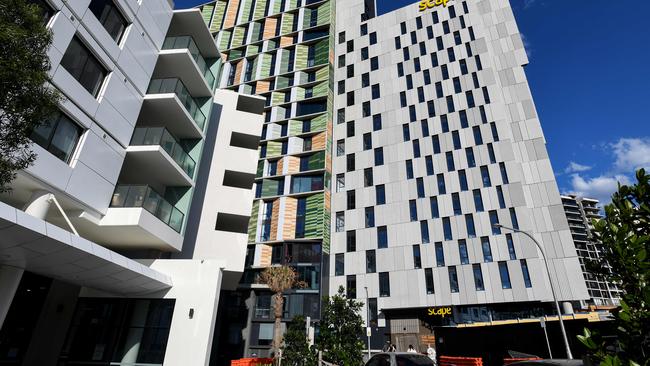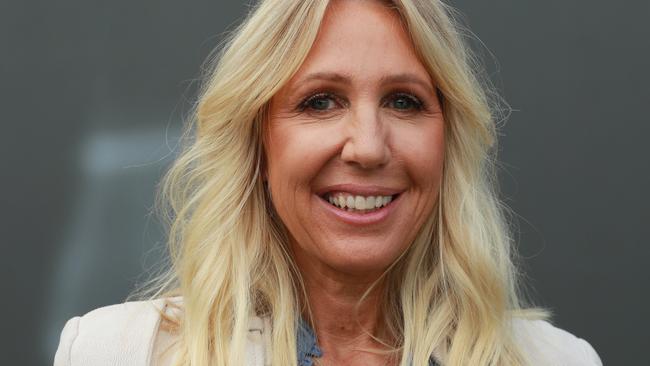Purpose-built student accommodation bounces back: Property Council report
Students are back and big capital is not far behind as the sector emerges as one of the winners in the post-pandemic recovery.

Student accommodation has emerged as one of the big winners in the recovery from the coronavirus crisis.
Operators are riding the come back along much of the eastern seaboard, with forward bookings for next year running ahead of pandemic levels, as the residential rental squeeze hits returning students.
As the once-niche asset class goes mainstream, players in the sector are trying to ensure the legislative framework will allow for its rapid growth to continue and position it to attract major superannuation funds.
Many funds are taking the prospect seriously as traditional asset classes have been hit by the crisis and still have unresolved problems. But what’s happening on the ground is leading to the biggest turnaround. Student accommodation, which was essentially deserted as Covid-19 struck, is now bouncing back strongly. The sector is thinking longer-term.
Fewer taxes on foreign investment of capital and national consistency in the classification of the growing purpose-built student accommodation sector are at the top of the wishlist, ahead of the surge of international pupils returning to pre-Covid-19 levels.

The burgeoning sector has picked up steam and now represents more than $20bn in assets across the country, according to the Property Council of Australia’s inaugural report on purpose-built student accommodation (PBSA).
About 76,500 beds are currently on offer across more than 200 assets, with the sector growing at an annualised rate of 7.7 per cent over the past seven years. The vast majority of capital backing the sector is international, as the local market is seem as an attractive growth vehicle.
Among the key recommendations from the report were the need to tackle the lack of consistency in the classification of the sector across the states and territories, and for taxation reform to encourage foreign investment.
PBSA is currently classified as an alternative housing asset class. This has led to relatively low levels of investment from domestic investment, such as superannuation funds, banks, and investment trusts, compared to the more mature markets like the US and Britain.
Student accommodation group Scape chief executive Anouk Darling said policymakers needed to overcome the “draconian” taxes, tenancy laws and building requirements for the emerging sector.
“If tax system could look at making it far more attractive for not just foreign capital, but Australian capital as well, then there are great opportunities for growth,” Ms Darling said.
“This is a sector that is supporting Australia’s largest services exports, and pre-pandemic, it was a $40bn sector. It’s so vital to the Australian economy and there is room for growth.”
Queensland projects currently incur some of the highest transaction fees.

The same $50m project would cost an additional $7.4005m in Queensland and nearly $7.3m more in Tasmania and South Australia, which have a foreign owners’ surcharge of $3.5 to $4m. States and territories applies varying levels of stamp duty, with the ACT ($3.315m) and West Australian ($3.611m) markets incurring the lowest fees. Some fees, such as stamp duty in SA, are the subject of legal cases.
After 10 years, the same international investor would have paid over $12.5m in duties, fees and land taxes in four states.
Education of governments was crucial, said UniLodge Australia chief executive Tomas Johnsson. The Property Council recently established a PBSA council with 10 providers nationally to lobby for changes.
“Just at the very basic level, (we want) to get decision makers to understand the difference between these types of buildings, with all the services that are wrapped around that clearly dictated by being purpose-built student accommodation,” Mr Johnsson said.
Additional supply houses students who would otherwsie have been competing within the already stretched rental market, argued the executive director of the Property Council’s newly established Student Accommodation Council, Torie Brown.
“We know there’s a strategic need in Australia for more PBSA,” she said. “We think governments should be more strategic with how they apply those foreign investor surcharges and taxes to try and build the supply of PBSA in our cities.”
Despite the flow of international students still lagging pre-Covid levels, and not set to fully recover until 2027, the uptake of beds has been robust due to growing domestic demand. About half of those letting beds are Chinese (27 per cent) and Australian (26 per cent), with the rest an increasingly diverse mix of nationalities.

Sydney has the tightest supply of accommodation, with 31 students per specialist bed and a market rental vacancy rate of 1.3 per cent. In Victoria, the rate is half that at 17 students per bed with a similar vacancy rate, while Queensland has a rental vacancy rate of 0.9 per cent and 14 students per bed.
Specialist advisers at JLL expect that investors will still be motivated by the strong investment thesis and the attractive return profile of PBSA above core real estate investment classes. It sees the outlook for the remainder of 2022 and 2023 as largely positive, notwithstanding economic and inflation headwinds.
JLL experts David Hill and Louise Burke say key demand influences over student housing occupancy and income tend to be less correlated to typical economic cycles than the core asset classes. They predict that more big deals are to come after Singapore’s GIC ploughed $568m into buying a stake in a portfolio earlier this year. “Investors will continue to favour portfolio purchases to access immediate scale – ideally alongside development pipelines,” the pair said.
But for now a lack of available opportunities – despite a Brisbane portfolio recently not trading – are pushing some players to work with local developers to build specialist facilities from the ground up.



To join the conversation, please log in. Don't have an account? Register
Join the conversation, you are commenting as Logout